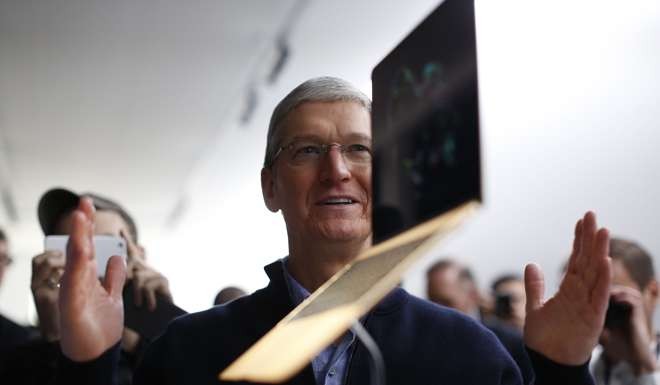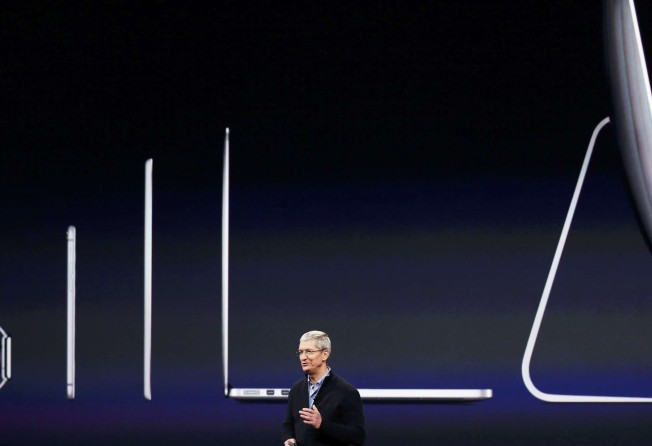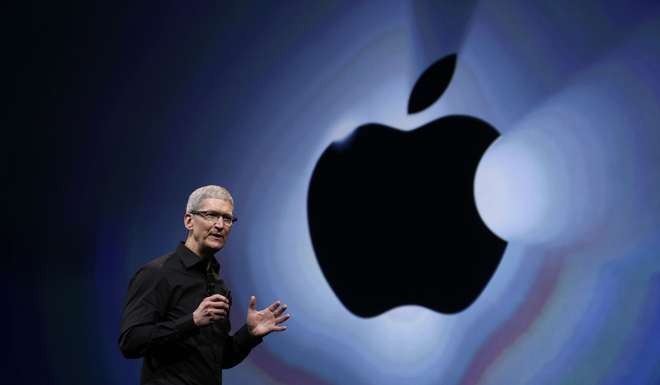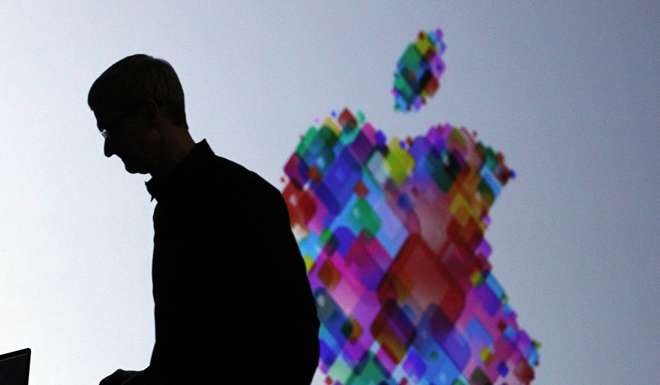
Tim Cook delivers astounding profits – but he still can’t catapult Apple’s share price
CEO has more than doubled the company’s earnings, yet the product differentiation between Apple and the likes of Google and Microsoft are narrowing

Last Tuesday, Apple announced its results for the fiscal quarter to December 2016. As the world’s largest firm by market valuation, it has not disappointed the public in terms of its sales volume.
After three consecutive quarters of overall year-on-year decline, Apple’s overall revenues rebounded during the last big holiday season, and shares rose more than 3 per cent, now only about 6 per cent off the record high of February 2015, when the firm was valued at $775 billion.
Despite its stellar performance, however, Apple still has no shortage of critics, whose ranks have seemed only to grow since Tim Cook has taken the reins. This may also explain why Apple is glaringly undervalued compared to other tech giants.
Apple’s ratio of price to earnings per share (P/E), which shows what the market is willing to pay for a stock based on its current earnings, sits at around 15. By the same measure, Microsoft and Google are hovering at about 30, Facebook at 50, and Amazon, the most extreme outlier of all, is close to 200.
To put it differently, investors are willing to bet thirteen times more on Amazon than on Apple for every dollar earned by either company. How could that be possible?

● The Apple Core:
More than fifteen years ago, when Apple first introduced the iPod in October 2001, the project was set to meet an impossibly short deadline imposed from the top down by Steve Jobs. To do so, Jon Rubinstein, then head of hardware, had to swiftly assemble an engineering team that focused on integrating standardised third-party components into a small package.
Importantly, the prime differentiation of the iPod was not its physical design but its complementary offering, iTunes. Jobs reportedly insisted that the iTunes user interface be modelled on Palm’s HotSync software so that the iPod could transfer songs seamlessly from iTunes.
Apple’s commanding lead is therefore rooted in the flawless integration of hardware and software wrapped in an elegant industrial design.
In 2007, while iPod sales were still going through the roof, Jobs launched the iPhone, which combined an iPod, a cell phone, and Internet access into a single device.
Although iPhone’s exclusive touch-screen at the time attracted much attention from the general public, what sustained iPhone’s differentiation against other competitors was the App Store.

By providing software development kits to independent software developers at a low cost, Apple became the leading platform architect of the smartphone industry. Through its App Store and mobile devices, the company fostered the development of what has become the largest mobile app marketplace.
These two core capabilities, the integration of hardware, software, and design and the orchestration of a deep network of independent app developers, have sustained the growth of iPhone over the past ten years. According to BMO Capital Markets, during the third quarter of 2016, Apple took home 103.6 per cent of the smartphone industry’s profits – arithmetically impossible if not for the fact that competitors actually lost money in the sector. With so much success, what’s there to complain about?
● Why investors are fidgeting:
It turns out the stock price of a firm is no more than the net present value of all future cash flow. If managers grow the company’s earnings at the rate the market expects, the firm’s share price grows only at the rate of its cost of capital, as those expectations have already been factored into the current share price.
the only way to increase a company’s stock price is to provide constant ‘upside surprises’ by repeatedly delivering growth that the market has not foreseen
To persistently create shareholder value at a greater rate, managers must do something that investors have not already taken into account – and they must do so over and over again. In other words, the only way to increase a company’s stock price is to provide constant “upside surprises” by repeatedly delivering growth that the market has not foreseen.
For this reason, when Apple reported its earnings last Tuesday, investors looked at its services revenue, not just at iPhone sales. At the deepest level, there has always been the lurking fear that the two core capabilities of Apple are being rapidly replicated by competition.
● The roaring old rivals:
Just before Christmas last year, Microsoft revealed the Surface Studio, a 28-inch all-in-one desktop that can flatten out into a digital drafting table. Its immersive computing experience, geared for visual artists, allows designers to lean over the display horizontally as they would over a drafting table.
The Surface Dial, a physical puck that one plops on the screen, triggers a menu of functions specific to the app being used.
“When we can change the colour while you’re painting without even picking up the [stylus’] tip, that’s not just as good as real life – that’s better,” said one user.
This is exactly the sort of integration between physical accessories and operating systems that has made Apple distinctive, except this time the thunder came from its old rival, Microsoft.
Meanwhile, Google has launched its Pixel phone.

Hardwired into Pixel is Google Assistant, similar to Microsoft’s Cortana, Apple’s Siri, and Amazon’s Alexa. But because Google has acquired considerable knowledge about the world, having spent the past 18 years parsing data for search queries, the conversational assistant appears to be far more intelligent than its contemporaries.
When asked, “Play the Shakira song from Zootopia,” Google assistant knows which track to play. The assistant is also capable of offering detailed advice on local businesses and directions with traffic predictions, thanks to Google Maps. Your favourite holiday will even display when you casually say, “Show me my pictures of the beach from last summer.”
All these mean the product differentiation between Apple and others is narrowing.
To suggest Apple is running into some sort of existential crisis is, of course, absurd. After Steve Jobs departed, CEO Cook has more than doubled the company’s net profit to an astounding $53 billion per year.
Yet, as the stock market suggests, most investors believe Google and Microsoft will catch up fast. As artificial intelligence and digital assistants are gathering steam, Apple must learn some new tricks before it’s too late.
Howard Yu is professor of strategy and innovation at IMD Business School in Switzerland